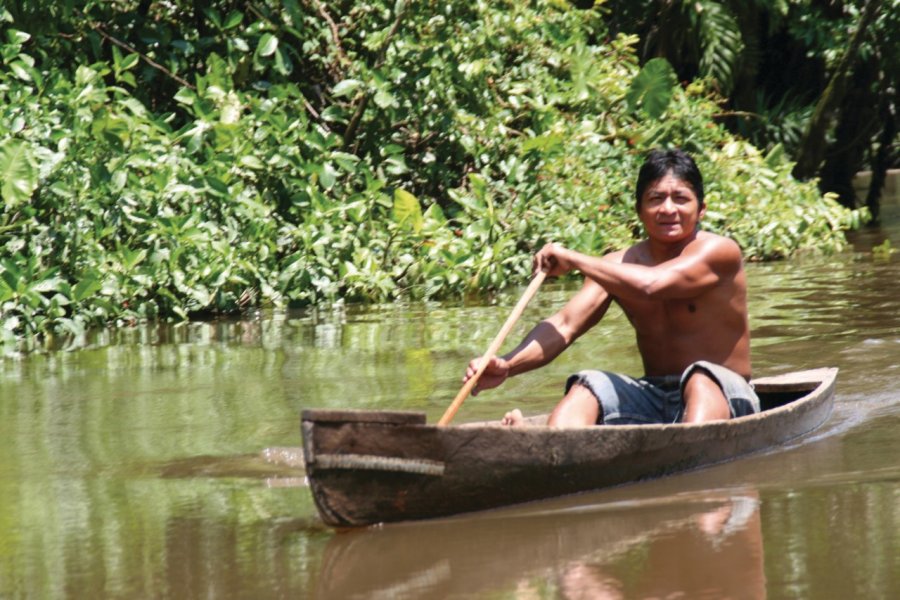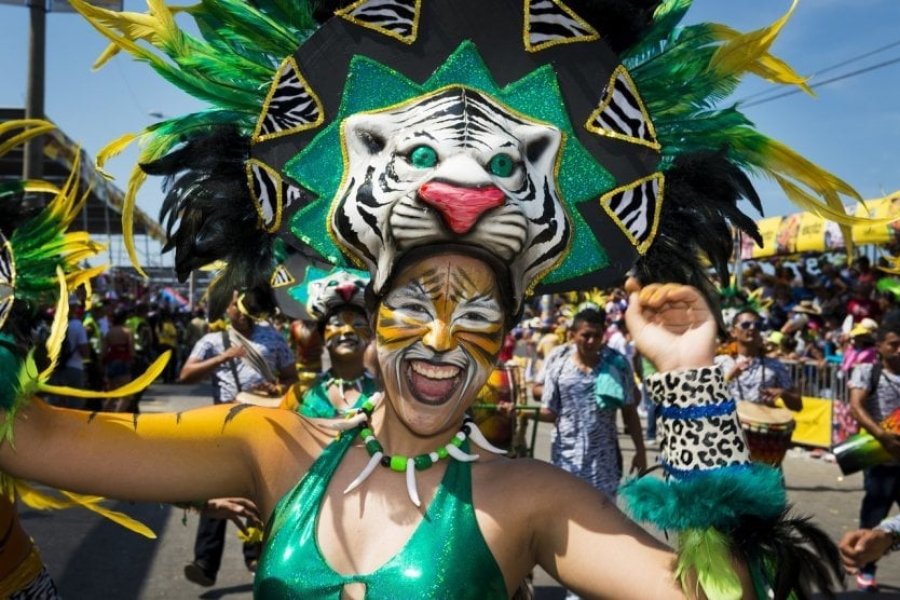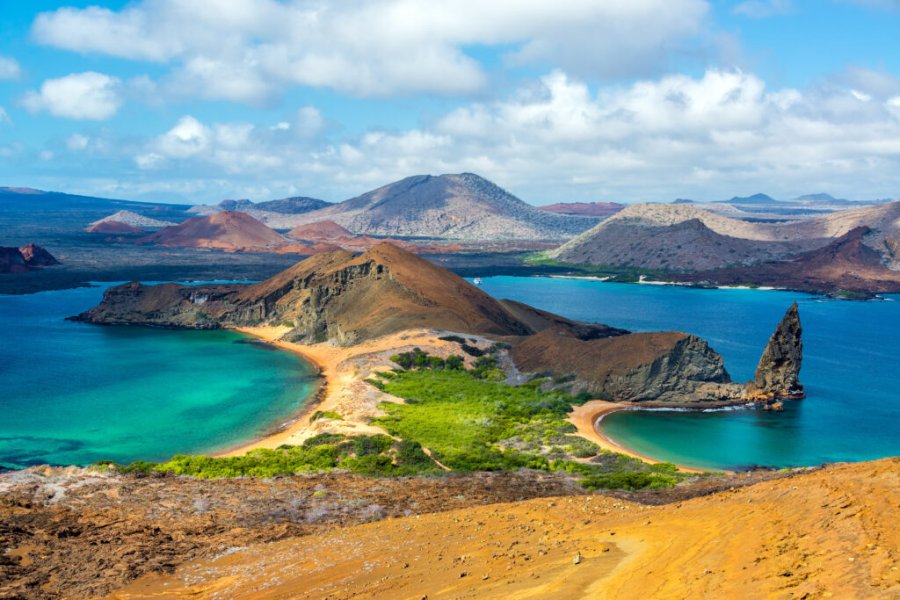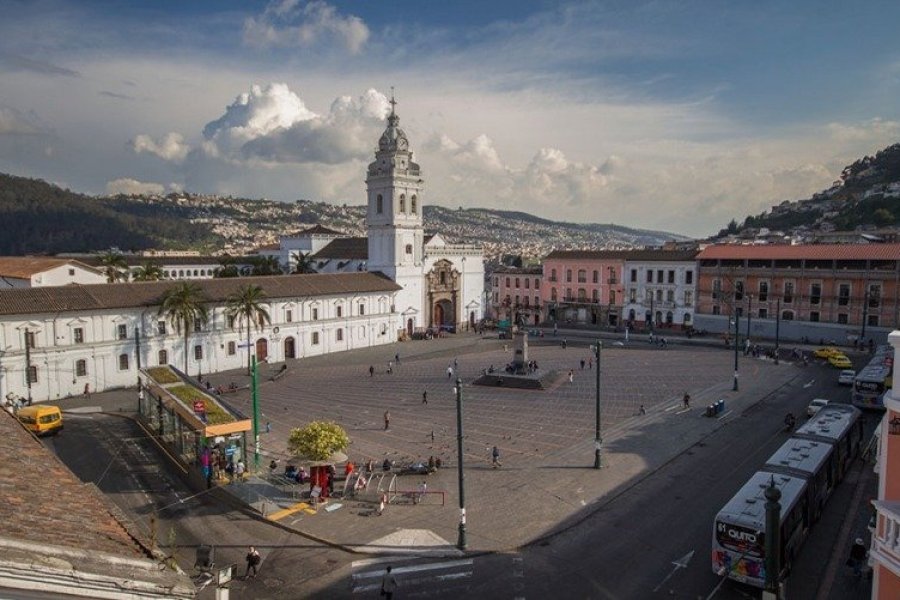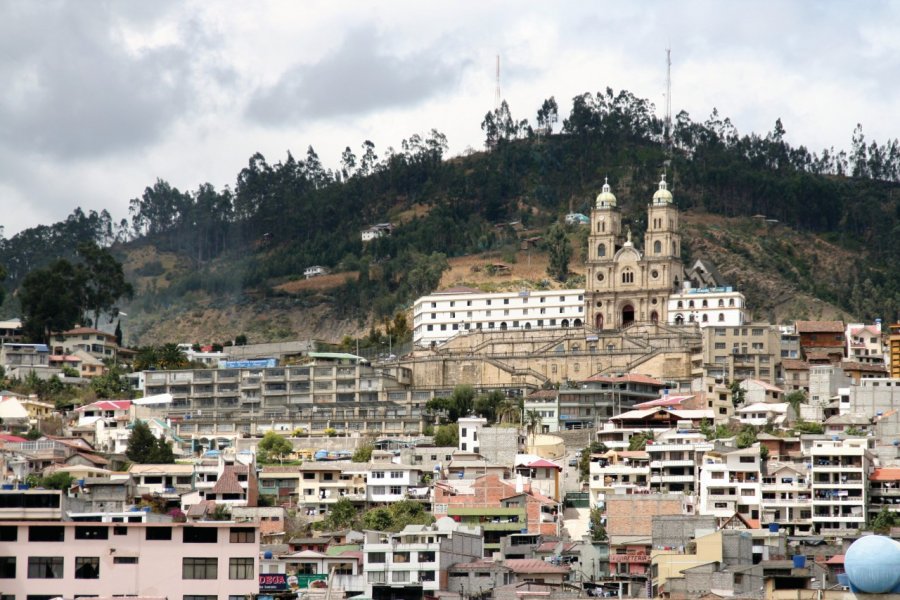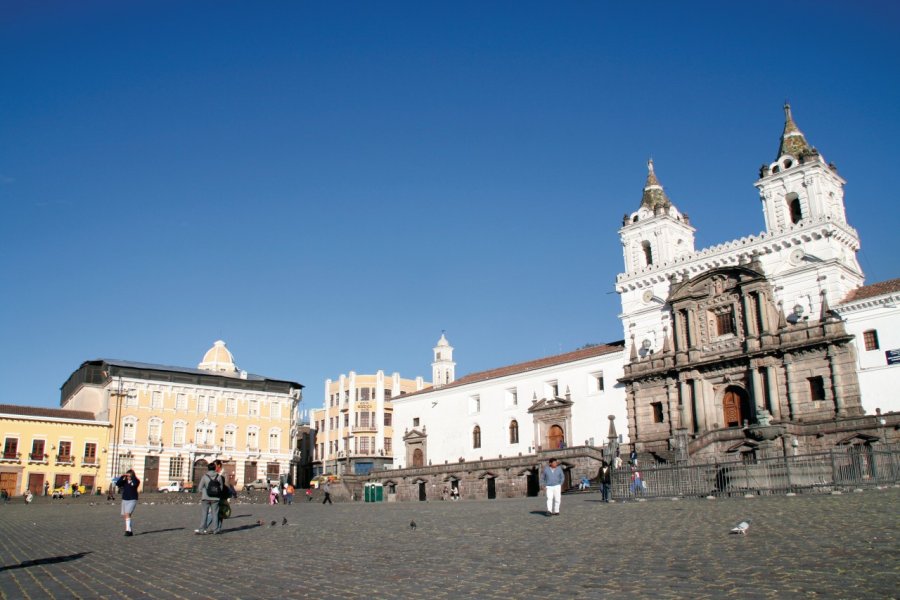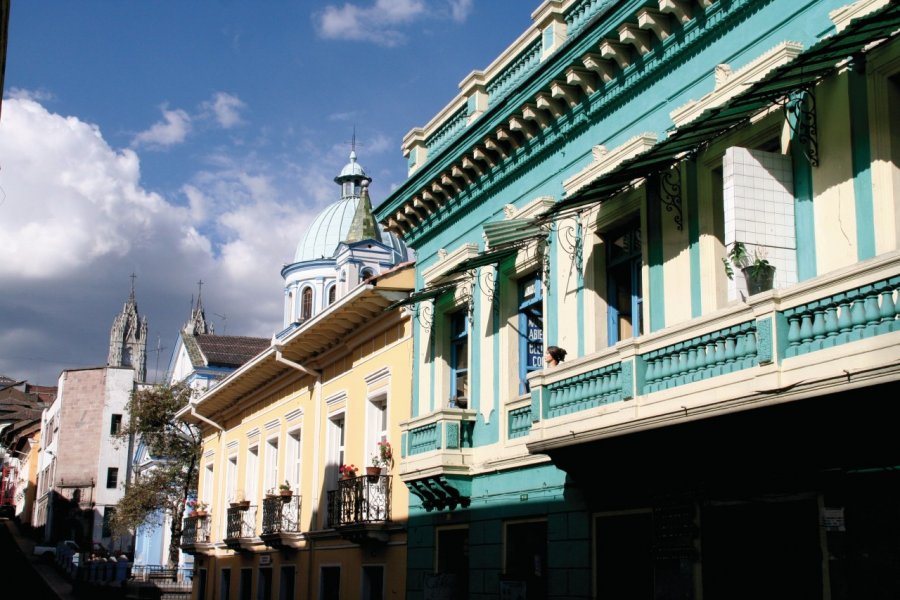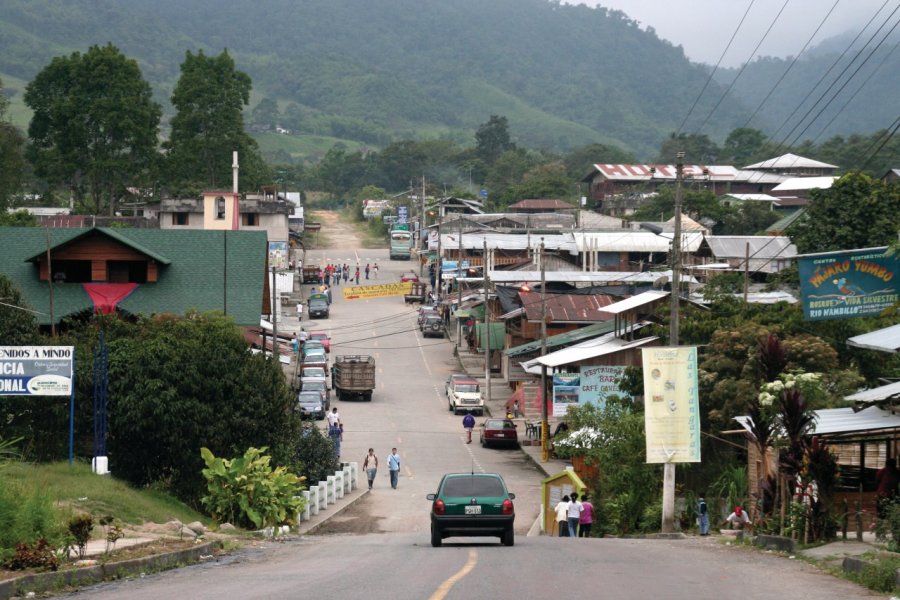Travel guide Ecuador
Ecuador, the smallest country in Latin America after Uruguay, has all the makings of a great tourist destination thanks to its rich landscapes, natural wonders often perched at a few thousand meters above sea level and deserted by man. Terrestrial paradises in the middle of the Pacific Ocean, with the volcanic archipelago of the Galapagos, a rich natural ecosystem listed as a UNESCO World Heritage Site that extends 1,000 km offshore. Vast as half of France, nestled between Colombia and Peru, Ecuador develops on both sides of the Andes Cordillera to join the Pacific coast and the Amazon rainforest at both ends. A playground of adventure, to be explored with your Ecuador travel guide, composed of jungles, immense plateaus, fine sandy beaches, high altitude lakes and a wide range of volcanoes (about forty in total!), active or snow-capped. To go to Ecuador is then to offer yourself superb treks and to take advantage of impregnable points of view, it is to surf as in Montanita or to leave to the meeting of the producers of cocoa on the traces of the oldest chocolate ever discovered. Ecuador also attracts by its delicious mixture of indigenous and colonial cultures that brings together very diverse local populations but always high in color and traditions. With as architectural masterpieces, the historical hearts of the capital Quito and Cuenca, formidably preserved on the Andean plateau at more than 2,500 meters of altitude.
What to see, what to do Ecuador?
-
Book an activity
-
Customized travel
- The most beautiful cities Ecuador
When to go Ecuador ?
There is not really a best time to go to Ecuador. It will be sunny on the south coast from June to December (dry season) and more rainy and hot during the second part of the year, while in the Sierra, the climate is more or less the same all year round (spring) and varies with the altitude, although there is a rainy season from October to May with afternoon showers. In the jungle, the rainy season (even if the humidity is continuous) extends from January to May, with significant daily rainfall, often at the end of the day. Whatever the season, you will have to bring warm clothes, a bathing suit and a raincoat...
The high tourist season extends from June to September, and from November to the end of March. The beaches of the coast and the Galapagos are popular with Ecuadorian vacationers in December, February and March. The other tourist peaks correspond to the numerous popular and/or religious festivals that take place throughout the year (Holy Week in April, Inti Raymi in June, Mama Negra in October or November, etc.).
Suggested addresses Ecuador
Travel Ecuador
-
Find a hotel
-
Car Rental
-
International e-SIM package
-
Find a local agency
Considering the cost of the plane ticket, the duration of the journey and the time difference (6 hours in winter, 7 hours in summer compared to Europe), you should plan at least two weeks to discover Ecuador. Most visitors stay between three weeks and a month, and many plan a tour of several months through the neighboring Andean countries: Peru, Colombia and Bolivia. However, it is a pity not to devote oneself entirely to Ecuador itself, so great is the diversity of the country. The most important budgets will be able to visit the Amazon, the Andes, the Pacific coast and the Galapagos in a single trip of at least one month so as not to change base camp every two days. If your budget is limited, forget the Galapagos and go to the Pacific coast, its islands and its humpback whales from June to October, it is worth it. Have a good trip!
Find unique Stay Offers with our Partners
How to go Ecuador
How to go alone
The price variation depends on the airline used, and especially on the time of booking. To get the best fares in high season, buy your tickets four to six months in advance. For less popular periods, a much shorter delay should not prevent you from getting a good price.
How to go on a tour
Tour operators specializing in Ecuadorian travel produce their own trips and are generally very good at giving advice because they know the region inside and out. Note that their prices are often a little higher than those of generalist travel agencies.
How to get around
Domestic flights are frequent and serve the major cities as well as the Amazon. They are rather cheap except for the Galapagos Islands. The bus network serves every village and is the most economical and popular means of transportation, even if it is extremely time consuming. The train has been reactivated in recent years, mainly for tourist purposes in the Andes, on the Pacific coast and between Quito and Guayaquil.
Featured articles Ecuador
Discover Ecuador
Ecuador is a small country harboring the riches of a continent where many ethnic groups meet, each with its own particularity. To help you discover all the nuggets of this wonderful country, we present in the following pages the most striking aspects of each theme likely to interest you. The diversity of Ecuador's flora and fauna, a summary of the country's tumultuous history, an insight into religious beliefs and ancestral traditions, and much more. Whether you're dedicating your trip to the Andes, the Amazon or simply the Galapagos, you'll find all the information you need here to make sure you don't miss out on anything essential during your trip, or to prepare for it before you leave. We wish you all the best for your discovery of this country of a thousand colors and friendly, welcoming ethnic groups.
Pictures and images Ecuador
The 12 keywords Ecuador
1. #Banana

The banana is THE fruit of Ecuador, and one of the staples of the local population's diet. The country exports almost 7 million tonnes of bananas a year, representing around 18% of its total exports. It can be found in all its forms: fresh, fried, prepared... an essential accompaniment.
2. #Buen vivir
Buen vivir (good living) is a central principle of the worldview of the native peoples of the Andean and Amazon regions, for development centered on well-being and respect for the natural environment. This veritable philosophy and vision of life is aimed at living together in diversity, in harmony with Mother Nature.
3. #Cacao

Ecuador is often cited as the country that produces the best cocoa. In fact, for several years now, it has been receiving the highest awards in the world, and the media have not stopped mentioning its name. The recent discovery of ceramics dating from 3300 BC and containing cocoa remains, proves that the country is the cradle of this plant.
4. #Crevette
It's a little-known fact, but Ecuador is the second-largest exporter of shrimp to the United States, and the export of this crustacean is the country's second-largest export, just after black gold. It is also France's leading supplier of shrimp. Ecuadorian shrimps are renowned for their quality and traceability.
5. #Dance
If you want to be successful with the Ecuadorian people, it's a good idea to know how to dance; not rock'n'roll, which nobody knows in Ecuador, but salsa, merengue or cumbia. Quite simply, everyone dances here! Ecuador lives and breathes music, and any party is an excuse to dance the night away.
6. #Indigenous

While this term may have a pejorative connotation in the eyes of Europeans, in Ecuador, the term "indigenous" - and not "Indian" - is commonly used to refer to ancestral peoples. The country has sixteen distinct indigenous nationalities. Each has its own language, traditions and ancestral customs.
7. #Inti Raymi
The Festival of the Sun (in Quechua) is Ecuador's most important festival, held on June 21 to celebrate the southern hemisphere's winter solstice. This festival of Inca origin is celebrated mainly in the Andes, with parades, dances and convivial meals, attended by natives in traditional multicolored costumes.
8. #La Condamine
This French explorer and scientist is certainly better known to Ecuadorians than to the French, and the French Lycée in Quito bears his name. He was part of the first French geodetic mission to Ecuador, from 1736 to 1743, during which scientists succeeded in measuring an arc of the earth's meridian.
9. #Latitude 0°
You're in the middle of the world! The equator is the imaginary line marking the separation between the northern and southern hemispheres. While the equator mainly crosses the oceans, it also crosses Ecuador in several places. From the Cayambe volcano to Isabela Island in the Galapagos, it also crosses the heart of the Amazon region at Cuyabeno.
10. #Mercados
A trip to Ecuador must include a visit to the market. From the most famous market in South America in Otavalo, to the big Thursday morning cattle market in Saquisili, there's plenty to do. Small craftsmen, producers and farmers set up shop in the squares to the delight of locals and tourists alike.
11. #Oil
Discovered in the Amazon in 1970, it has revolutionized the country's economy, making Ecuador the second largest exporter in Latin America behind Venezuela. Many foreign companies are present in the country for the extraction as for the marketing, and one can observe, along the roads, the pipelines transporting it.
12. Quinoa

Cultivated for over 5,000 years, it is the sacred plant of the Incas, who called it the "mother of all grains". This easily digestible cereal is highly nutritious: gluten-free, low in fat, rich in iron and protein. At the time of the conquest, the Spaniards, anxious to impose their culture, replaced it with wheat.
You are from here, if...
You're courteous, just like Ecuadorians, and greet people as they enter a place.
You love roast gu inea pig(cuy asado), a typical Andean delicacy.
You salivate at the smell of canelazo, an alcoholic drink made fromaguardiente (cane alcohol), sugar and cinnamon.
You stop your car at the crossroads of big cities to buy an ice cream from street vendors.
You like to spend weekends at one of the many spas in the Sierra.
You attach above-averageimportance to the protection of flora and fauna.
You celebrate Inti Raymi while going to church on Sundays.
You enjoy copious and varied breakfasts, even if it means going without lunch but not forgetting to pack a snack just in case.
You'll manage to exceed an averagespeed of 30 km/h by car, because although the roads are in good condition, they are often winding and shrouded in fog in the Andes.

